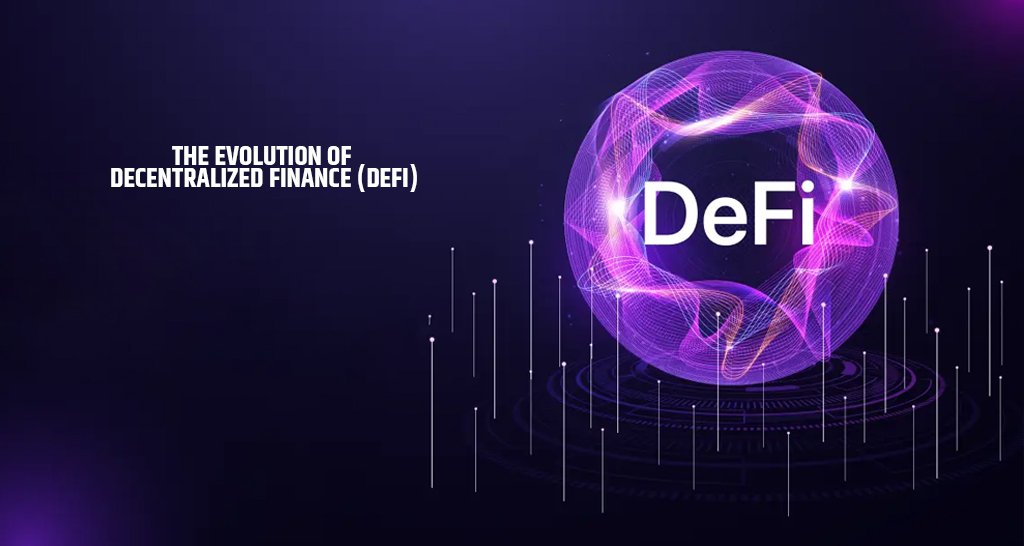Understanding Decentralized Finance: A Primer
Decentralized finance, commonly referred to as DeFi, represents a transformative approach to financial services that emphasizes the elimination of traditional intermediaries. Unlike conventional financial systems, which rely heavily on banks and central authorities, DeFi leverages blockchain technology to facilitate peer-to-peer transactions, fostering greater inclusivity and transparency. This shift reflects a profound reimagining of how financial activities, such as lending, trading, and earning interest, can be conducted.
One of the core principles of DeFi is transparency. Every transaction conducted within a decentralized network is recorded on a public ledger, making it accessible for anyone to verify. This level of openness contrasts starkly with traditional finance, where transactions are often opaque and dependent on institutional discretion. Moreover, security is significantly enhanced within DeFi ecosystems. The use of cryptographic protocols ensures that user funds are secured and resilient against malicious attacks. Smart contracts, self-executing agreements coded on the blockchain, automate many processes, minimizing the potential for human error and increasing reliability.
Another important aspect of DeFi is the reduction of intermediaries. By facilitating direct interactions between users, DeFi platforms allow individuals to retain control over their assets, avoiding the fees and limitations imposed by banks and other financial institutions. This disintermediation not only accelerates transaction speeds but also lowers costs associated with financial services.
Several applications are emerging within the DeFi landscape. Lending platforms enable users to borrow or lend assets without the need for traditional credit checks, decentralized exchanges (DEXs) allow users to trade cryptocurrencies directly with one another, and yield farming provides opportunities to earn returns by participating in various liquidity pools. Together, these applications exemplify the innovative potential of decentralized finance, paving the way for a more accessible and efficient financial future.
The Early Days of DeFi: Initial Developments and Key Projects
The origins of decentralized finance (DeFi) can be traced back to the launch of Bitcoin in 2009, which introduced the concept of a decentralized digital currency. However, it was the development of blockchain technology that laid the groundwork for what would evolve into the DeFi ecosystem. The advent of Ethereum in 2015 marked a significant turning point, enabling developers to create smart contracts and decentralized applications (dApps) on its platform. This breakthrough facilitated the deployment of programmable financial services without intermediaries, effectively reimagining the financial landscape.
One of the pivotal innovations in the DeFi space was the introduction of ERC-20 tokens, a standard that allows for the creation of tokens on the Ethereum blockchain. This development led to a myriad of projects seeking to harness the potential of decentralized finance. Among the first and most influential of these projects were MakerDAO and Compound. MakerDAO introduced a decentralized stablecoin, DAI, which is collateralized by various assets, allowing users to lend and borrow funds without relying on traditional institutions. Compound further revolutionized the scene with its algorithmic money market, empowering users to earn interest by lending their crypto assets.
The early days of DeFi also witnessed the emergence of initial liquidity pools, where users contributed tokens to create decentralized exchanges (DEXs). These pools facilitated trading without the need for centralized intermediaries, thus promoting a more open financial system. This decentralized model allowed for greater accessibility and transparency in trading, as well as the ability to participate in governance decisions. As these innovative projects gained traction, they began to attract users and capital, setting the stage for the rapid expansion of decentralized finance that would follow in subsequent years.
The Boom: DeFi Summer and Its Impact on the Cryptocurrency Ecosystem
The summer of 2020, often referred to as “DeFi Summer,” marked a pivotal point in the cryptocurrency landscape, characterized by an unprecedented surge in decentralized finance initiatives. This expansion was largely fueled by the rising interest in financial sovereignty and the desire to escape traditional finance’s limitations. A variety of factors contributed to the astronomical growth of DeFi during this period, including increased user participation and innovative financial mechanisms like yield farming and liquidity mining.
Yield farming, which allows users to earn interest or rewards on their cryptocurrencies by providing liquidity to DeFi protocols, became a popular strategy. This resulted in an influx of participants eager to capitalize on the attractive returns being advertised. As platforms such as Uniswap, Aave, and Compound gained traction, the total value locked (TVL) in DeFi projects skyrocketed, leading to an estimated surge from a few hundred million to multi-billion-dollar valuations within months. This meteoric rise exemplified how DeFi was disrupting traditional financial systems and attracting attention from both retail and institutional investors.
However, the swift ascent of DeFi also exposed significant risks and challenges. The burgeoning ecosystem was not without its vulnerabilities, particularly concerning smart contract integrity. Several projects experienced hacks or exploits, leading to substantial financial losses and raising questions about the security of these decentralized protocols. In addition, increased regulatory scrutiny followed as governments around the world recognized the potential for market manipulation and fraud within these new financial models. As a result, investors were prompted to weigh the lucrative prospects against the inherent risks associated with the DeFi space.
The Future of DeFi: Trends, Challenges, and Opportunities
The Decentralized Finance (DeFi) landscape is evolving rapidly, presenting a multitude of trends, challenges, and opportunities that are poised to shape its future. One of the most significant trends is cross-chain interoperability, which allows different blockchain networks to communicate and transact with one another. This functionality enhances liquidity and seamless user experiences, reducing barriers between various DeFi platforms. As the demand for such integrations grows, developers are focusing on protocols and solutions that facilitate secure and efficient cross-chain interactions.
Another crucial trend is the increasing integration of DeFi with traditional finance. Major financial institutions are beginning to explore decentralized solutions, recognizing the potential of blockchain technology to streamline operations and reduce costs. This convergence may lead to innovative financial products that blend the security of traditional banking with the benefits of the decentralized ecosystem. Consequently, users could experience faster transactions, lower fees, and greater access to financial services under this hybrid model.
However, the future of DeFi is not without its challenges. Scalability remains a primary concern as networks struggle to accommodate high transaction volumes without compromising performance. Solutions such as layer-2 scaling solutions and sharding are being developed to address these issues, yet the effectiveness of these approaches must be validated through real-world use cases. Additionally, security in DeFi has become increasingly critical, particularly as high-profile hacks have raised concerns around smart contract vulnerabilities. Continuous improvement in security protocols and risk mitigation strategies will be essential to foster user trust.
Despite these challenges, there are vast opportunities for innovation within the DeFi ecosystem. As the sector matures, investors and users alike could benefit greatly from new financial instruments and services that leverage the unique characteristics of blockchain technology. This evolving landscape promises to redefine the financial services sector, paving the way for an inclusive, efficient, and transparent financial future.



